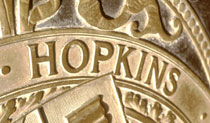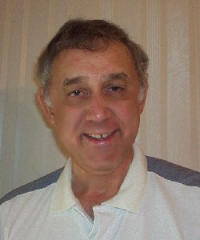
|
The Mathematical Association of America Maryland-District of Columbia-Virginia Section |
- Home
- History
- Main History Page
- Section History Document
- List of Past Officers
- Charter Members
- African-American Participation
- Stories from Section Members
- Section NExT Fellows
- Obituaries
- Smith Award Recipients
- Christensen Award Recipients
- Meritorious Service Award Recipients
- Undergraduate Award Winners
- Meeting Archive
- Past Meetings
- Talk Archive
- Old Section NExT Programs
- Newsletter Archive
- Meeting Minutes Archive
- Miscellaneous Documents
- Meetings
- Minutes
- Fall 2024 Executive
- Fall 2024 Membership
- Spring 2024 Executive
- Spring 2024 Membership
- Fall 2023 Executive
- Fall 2023 Membership
- Spring 2023 Executive
- Spring 2023 Membership
- Fall 2022 Executive
- Fall 2022 Membership
- Spring 2022 Executive
- Spring 2022 Membership
- Fall 2021 Executive
- Fall 2021 Membership
- Spring 2021 Executive
- Spring 2021 Membership
- Fall 2020 Executive
- Fall 2020 Membership
- Fall 2019 Executive
- Fall 2019 Membership
- Spring 2019 Executive
- Spring 2019 Membership
- Fall 2018 Executive
- Fall 2018 Membership
- Spring 2018 Executive
- Spring 2018 Membership
- Fall 2017 Executive
- Fall 2017 Membership
- Spring 2017 Executive
- Spring 2017 Membership
- Minutes Archive
- Newsletters
- Section NExT
- Awards
- Students
- Links
- Search
Fall 2003 Meeting at Johns Hopkins University
On November 7-8, 2003, Johns Hopkins University hosted the Fall 2003 MD-DC-VA Regional Meeting of the MAA.
Invited Addresses
Joseph GallianProfessor, Department of Mathematics and Statistics, University of Minnesota DuluthWorkshop: Getting Undergraduates Involved in Research Abstract: Although involving undergraduates in research has been a long standing practice in the experimental sciences, it has only been recently that undergraduates have been involved in research in mathematics in significant numbers. In this talk I discuss in general terms such things as how to get started in involving undergraduates in research, the benefits of undergraduate research to faculty and students, how to find suitable research problems, and what is considered to be undergraduate research. Banquet Address: Breaking Drivers' License Codes Abstract: Many states use complicated algorithms or formulas to assign drivers' license numbers but keep the method confidential. Just for the fun of it, Professor Gallian attempted to figure out how the states code their license numbers. In this talk he will discuss how he was able to break the codes for several of the states. The talk illustrates an important problem-solving technique that is not emphasized in mathematics classes. It also teaches the lesson that sometimes things done just for the sake of curiosity can have applications. Biographical Sketch: Joseph Gallian currently serves as the Second Vice President of the Mathematical Association of America. He recently earned the 2002 Council on Undergraduate Research Follow award for his excellence in conducting research with undergraduates. Among other high recognitions, he was an MAA Polya Lecturer (1999-2001). Professor Gallian earned his M.A. at Kansas in 1968 and his Ph.D. at Notre Dame in 1971. He has worked at the University of Minnesota Duluth since 1972. His many publications include such books as Contemporary Abstract Algebra, 5th ed., Houghton Mifflin, 2002; For All Practical Purposes, W.H. Freeman, (coauthor), 3rd ed., 1994, 4th ed., 1997, 5th ed., 2000, 6th ed., 2003; and Principles and Practices of Mathematics, Springer-Verlag, (coauthor), 1997. Among other impressive credentials, Joseph Gallian has published 79 articles, served on 27 national committees, and presented over 250 invited addresses. 
Charles R. JohnsonProfessor, Department of Mathematics, College of William and MaryInvited Address: What I have Learned from Undergraduate Research Abstract: We survey some striking results of Undergraduates doing research in the Summer at William and Mary. These include: a) characterization of LU factorizability; b) solution of symmetric word equations arising from physics; and c) determination of the possible multiplicities of matrices with a given graph, among others. Some thoughts about how undergraduate research works will be given. Biographical Sketch: Charles Johnson was born sometime in the middle of the last century, received his BA from Northwestern and PhD from Caltech (with Olga Taussky Todd) and was an NRC-NAS Postodoctoral Research Associate with Morris Newman at the then National Bureau of Standards. He was on the faculty of the University of Maryland (11 years) and Clemson (2 years) before coming to William and Mary as the Class of 1961 Professor and Virginia Eminent Scholar. His publications are nearing 300, including the books Matrix Analysis and Topics in Matrix Analysis (with Roger Horn) and more than 20 papers with undergraduate students. He has received the Washington Academy of Sciences Award for Outstanding Achievement in the Mathematical Sciences and won a state of Virginia Outstanding Faculty Award in 2001. He has been an editor of all the major journals in matrix analysis, and has been managing editor of two Siam journals. 
Donald GemanProfessor, Department of Mathematical Sciences, Johns Hopkins UniversityInvited Address: Perception in Artificial and Natural Systems Abstract: Animals process sensory data, such as acoustical and visual signals, very rapidly and virtually flawlessly in order to localize and identify sounds and objects in the surrounding environment. What representations and methods of inference does the brain employ? Moreover, regardless of how these tasks are accomplished by living organisms, how might one construct artificial systems - computer programs and algorithms - in order to perform similar tasks? In this talk I will review a few of the mathematical frameworks proposed for solving "perceptual inverse problems" arising in the semantic interpretation of natural scenes. Biographical Sketch: Donald Geman received his Ph.D. in Mathematics from Northwestern University and was Distinguished Professor at the University of Massachusetts until 2001, when he joined the Department of Mathematical Sciences and Whitaker Biomedical Engineering Institute at Johns Hopkins University, where he is now Professor. He works at the intersection of applied mathematics and computer science, specializing in stochastic analysis, vision, learning and bioinformatics. |
Copyright © 2012 - The Mathematical Association of America
Please send comments, suggestions, or corrections for this page to Brian Heinold at heinold@msmary.edu
Last Modified: 03/05/2012 - 09:16pm